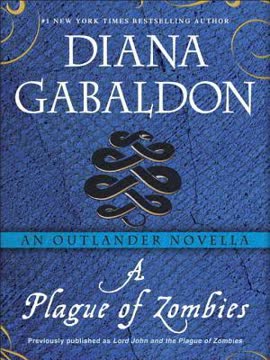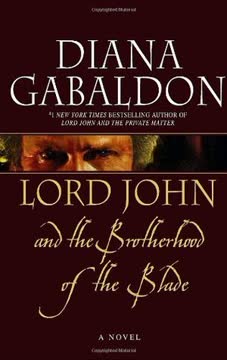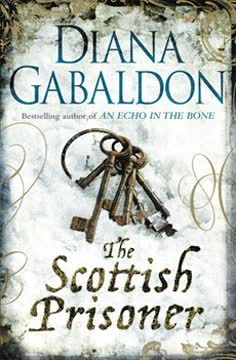Plot Summary
Arrival in Spanish Town
Lord John Grey, a British officer, lands in Spanish Town, Jamaica, in 1761, tasked with quelling a slave rebellion and restoring order. The island is tense, with plantations burning and rumors of violence spreading. Grey is immediately struck by the unfamiliar, lush, and dangerous environment, and by the palpable fear among the colonial elite. He meets Governor Warren, who is clearly unnerved and possibly hiding something. The governor's anxiety sets the tone for Grey's mission, hinting at deeper troubles beneath the surface. Grey's outsider status and sense of duty are established, as is his curiosity about the true nature of the unrest. The stage is set for a confrontation not just with rebels, but with the island's secrets and superstitions.
The Governor's Dread
In a stifling meeting, Grey observes the governor's terror, which seems to go beyond the political crisis. Warren describes escalating violence: plantations burned, slaves freed, and now, murder. The latest victim, a planter named Abernathy, was killed in his own home. The governor's nerves are frayed, and his drinking is obvious. A small snake on the table becomes a symbol of the pervasive dread. Grey senses that Warren's fear is not just of rebellion, but of something more personal and supernatural. The conversation hints at the maroons—descendants of escaped slaves—moving closer to Kingston, and the possibility of a curse or dark magic at work. Grey's skepticism is challenged by the intensity of local beliefs.
Snakes and Servants
Grey's encounter with the snake in the drawing room is only the beginning. The governor's secretary, Dawes, is evasive about the maroons and their leader, Captain Cresswell. Grey's room is invaded by spiders, cockroaches, and another snake, deepening the sense of unease. The young servant Rodrigo stands out for his poise and beauty, but also for his mysterious knowledge of local customs. The servants' reactions to the wildlife reveal their own fears and superstitions. Grey's attempts to maintain rationality are tested by the island's relentless strangeness. The motif of snakes recurs, symbolizing both wisdom and danger, and foreshadowing the supernatural elements to come.
The Rebellion's Edge
Grey studies maps and interviews Dawes, learning about the maroons' settlements and their history as escaped slaves. The rebellion is not random; it follows a pattern, moving steadily toward the colonial centers. The maroons are led by Captain Accompong, a figure shrouded in legend. Grey senses that the official story—of simple slave violence—does not capture the complexity of the situation. The maroons' grievances are rooted in broken promises and abuses by colonial authorities, especially the mysterious disappearance of Captain Cresswell. Grey's military instincts tell him that force alone will not resolve the crisis; understanding the maroons' motives is crucial.
Dinner and Deceptions
At dinner, Grey observes the strained relationships among the colonial officials. Fettes and Cherry, his fellow officers, are competent but wary. The conversation reveals the corruption and incompetence of the administration. The governor's fear of snakes is traced to a curse laid upon him by an Obeah man, after he assaulted a young slave woman. The maroons' protest over the arrest and whipping of two of their own is dismissed by the authorities, fueling further unrest. Grey's questions are met with evasions and half-truths. The dinner scene crystallizes the moral rot at the heart of colonial rule, and the sense that something unnatural is stalking the governor.
Night Terrors
Unable to sleep, Grey is visited by Rodrigo, who delivers a cryptic warning from an Obeah man: "Beware the governor—zombies come for him." The word "zombie" is spoken with dread, and Grey learns that in local belief, zombies are the dead raised by magic to serve their master's will. That night, Grey is attacked in his room by a foul-smelling, seemingly undead assailant. He barely survives, discovering that the creature bleeds—proving it is not truly dead. The attack shakes Grey's rationality and forces him to confront the reality of local magic and the power of belief. The line between superstition and reality blurs.
Obeah Warnings
Grey's investigation leads him to question servants and locals about Obeah—the West African-derived system of magic and spiritual power. He learns that Obeah men and women are both feared and respected, capable of healing, cursing, and even raising the dead. The maroons are said to avoid zombies, considering them unclean. Grey's skepticism is eroded by the consistency and intensity of these beliefs. He realizes that the rebellion is as much spiritual as political, and that the colonial authorities' ignorance of Obeah has left them vulnerable. The warning about the governor's fate takes on new urgency.
The Zombie Attack
The governor is found dead, his body mutilated and partially devoured. The servants and sentries have vanished, and panic spreads through Spanish Town. Grey's examination reveals that the governor was stabbed before being eaten, suggesting human agency behind the horror. The attack is blamed on zombies, and fear of a supernatural plague grips the colony. Grey suspects that the murder was orchestrated to appear as a zombie attack, masking a more mundane revenge. The maroons are blamed, but Grey doubts their involvement. The incident crystallizes the intersection of violence, magic, and colonial guilt.
Plantation Politics
Grey visits the Twelvetrees plantation, meeting Philip and his sister Nancy. The siblings are recent arrivals, inheriting the estate after a cousin's death. Nancy's animosity toward the governor is personal—he seduced and abandoned her in London. The conversation reveals the complex social hierarchies of Jamaica, where race, class, and power intersect. Nancy educates Grey about the Koromantyn slaves and the role of Obeah in their culture. The planters' fear of rebellion is matched by their ignorance of the forces they have unleashed. Grey's interactions with Nancy and Philip highlight the personal vendettas and secrets that fuel the island's unrest.
The Widow of Rose Hall
Grey visits Rose Hall, where the widow Abernathy survived an alleged maroon attack. She is a formidable woman, rumored to practice African magic. Grey learns from her the practical method of creating zombies: a combination of poison, burial, and psychological manipulation. Zombies are not truly dead, but drugged and brain-damaged, used as tools of terror. Mrs. Abernathy's knowledge is both scientific and mystical, blurring the line between medicine and magic. Grey suspects she murdered her husband and staged the attack, further complicating the web of violence and deception. The encounter deepens Grey's understanding of the island's hidden currents.
Secrets in the Spring
Grey's suspicions about Mrs. Abernathy are confirmed when he discovers her swimming in the spring where she claimed to have hidden from attackers. There is no evidence of a maroon assault; the story is a fabrication. Grey realizes that the maroons are being framed for crimes they did not commit, and that the true sources of violence are within the colonial elite. The spring, a symbol of both life and death, becomes a site of revelation. Grey's investigation shifts from external threats to the internal rot of the colonial system, and the ways in which fear and superstition are manipulated for power.
The Governor's Demise
With the governor dead, Grey assumes command and imposes martial law. He interrogates Dawes, the secretary, and uncovers the story of the governor's curse: after assaulting a slave woman, he was cursed by an Obeah man, leading to a plague of snakes and his eventual death. The servants' flight and the disappearance of Captain Cresswell point to a deeper conspiracy. Grey's officers, Fettes and Cherry, help him piece together the connections between the maroons, the missing superintendent, and the colonial administration's corruption. The investigation reveals the limits of British authority and the power of local justice.
The Maroon's Message
Grey learns that the maroons are led by Captain Accompong, a legendary figure. The maroons communicate through horn signals, and Grey decides to seek a parley rather than launch a military assault. He ventures into the mountains with Tom and Rodrigo, only to have his companions captured. The maroons' message is clear: they demand justice for their grievances, and will not be intimidated by British force. Grey's journey into the mountains is both a physical and psychological trial, forcing him to confront his own fears and prejudices. The stage is set for a confrontation with Accompong.
Into the Mountains
Alone and stripped of resources, Grey treks through the jungle, guided by the maroons' signals. He is tested by hunger, exhaustion, and the ever-present threat of violence. The maroons' settlement is both a refuge and a fortress, a testament to their resilience and autonomy. Grey's arrival is met with suspicion, but also curiosity. He is brought before Accompong, a shrewd and charismatic leader. The maroons' demands are clear: justice for the crimes committed against them, and recognition of their autonomy. Grey must negotiate not just for his own life, but for the future of the island.
Accompong's Judgment
In the maroon camp, Grey learns the full story: Rodrigo, driven by love and revenge, hired a houngan (Obeah priest) to use zombies to kill the governor. The maroons themselves abhor zombies, considering them unclean. Accompong, seeking to clear his people's name, delivers Rodrigo—now a zombie himself—and the corrupt Captain Cresswell to Grey. The maroons' justice is harsh but principled, rooted in their own traditions. Grey is forced to confront the limits of British law and the reality of local power. The encounter is a reckoning for all involved, blending mercy, vengeance, and cultural negotiation.
The Truth of Zombies
Grey witnesses the tragic transformation of Rodrigo, now a mindless shell, the victim of both colonial violence and supernatural retribution. The houngan, Ishmael, explains the process: zombies are created through poison and ritual, their humanity erased. The maroons' horror at the practice underscores the moral boundaries of their rebellion. Grey's efforts to save Rodrigo are ultimately futile, but his insistence on taking responsibility for the young man reflects his own code of honor. The truth about zombies is both a metaphor for the dehumanization of slavery and a literal horror unleashed by the abuses of power.
The Cave of Snakes
To prove his sincerity and win the maroons' trust, Grey undergoes a ritual ordeal in a hot spring cave, presided over by Ishmael. He faces his deepest fears, symbolized by snakes—creatures of wisdom, danger, and transformation. The ritual is both a test of courage and a negotiation with the island's spiritual forces. Grey's survival and refusal to lie earn him the maroons' respect. The experience leaves him changed, marked by the island's magic and the weight of its history. The cave becomes a crucible, forging a new understanding between Grey and the maroons.
Justice and Return
Accompong releases Grey's men and hands over Cresswell for trial, trusting Grey's promise of justice. Rodrigo, now a zombie, is entrusted to Grey's care, a living symbol of the costs of vengeance and the dangers of tampering with forces beyond understanding. The maroons' autonomy is tacitly acknowledged, and a fragile peace is restored. Grey returns to Spanish Town, forever altered by his journey. The story ends with a sense of ambiguity: justice has been served, but at great cost, and the island's wounds remain. The legacy of slavery, rebellion, and magic lingers, haunting both colonizer and colonized.
Characters
Lord John Grey
Lord John Grey is a British officer and nobleman, sent to Jamaica to restore order during a time of crisis. Intelligent, skeptical, and principled, he is both an outsider to the island's culture and a man of deep empathy. Grey's homosexuality, a secret in his world, gives him a unique perspective on otherness and marginalization. Throughout the story, he is challenged by the island's mysteries—both human and supernatural—and forced to confront his own fears and prejudices. His relationships with servants, officers, and locals reveal his capacity for compassion and his commitment to justice, even when it conflicts with colonial authority.
Governor Derwent Warren
Governor Warren is the embodiment of colonial authority gone awry. Outwardly powerful, he is inwardly consumed by fear—of rebellion, of supernatural retribution, and of his own guilt. His assault on a slave woman and subsequent curse by an Obeah man set in motion the events that lead to his death. Warren's descent into paranoia and alcoholism mirrors the moral decay of the colonial regime. His inability to understand or respect the island's culture makes him vulnerable to both human and supernatural threats. In the end, he is destroyed by the very forces he sought to control.
Rodrigo
Rodrigo is a young, beautiful servant whose poise and intelligence set him apart. His love for Azeel and his desire for justice drive him to seek out a houngan and orchestrate the governor's murder using zombies. Rodrigo's actions are both a response to personal trauma and a reflection of the larger injustices of slavery. His transformation into a zombie is a profound tragedy, stripping him of agency and humanity. Rodrigo embodies the costs of vengeance and the dangers of invoking powers beyond one's control. His fate haunts Grey and serves as a warning about the cycle of violence.
Captain Accompong
Accompong is the legendary leader of the maroons, a community of escaped slaves living in the mountains. Physically unimposing but intellectually formidable, he commands respect through wisdom and charisma. Accompong's primary concern is the survival and autonomy of his people. He navigates the complexities of rebellion, colonial politics, and spiritual belief with pragmatism and integrity. His willingness to negotiate with Grey, and his insistence on justice for both maroons and colonists, mark him as a figure of moral authority. Accompong's judgment is decisive, blending mercy and severity in the pursuit of peace.
Nancy Twelvetrees
Nancy is the sister of Philip Twelvetrees and a recent arrival in Jamaica. Her personal history with Governor Warren—seduction and abandonment—fuels her animosity and shapes her perspective on colonial society. Nancy is intelligent, outspoken, and knowledgeable about the island's natural and cultural history. Her flirtation with Grey masks deeper wounds and a longing for agency in a world that marginalizes women. Nancy's insights into Obeah and slave culture help Grey navigate the island's mysteries. She represents the complexities of colonial identity and the personal costs of power and betrayal.
Mrs. Abernathy
Mrs. Abernathy is the formidable widow of Rose Hall, rumored to practice African magic. She is both a survivor and a manipulator, using her knowledge of poisons and rituals to maintain power. Her explanation of zombie-making bridges the gap between science and superstition, revealing the psychological and physical mechanisms behind the myth. Mrs. Abernathy's ambiguous morality and possible involvement in her husband's death make her a symbol of the blurred lines between victim and perpetrator. She embodies the dangers of unchecked power and the allure of forbidden knowledge.
Gideon Dawes
Dawes is the governor's secretary, a minor official caught between loyalty and self-preservation. His evasions and half-truths reflect the broader failures of colonial administration. Dawes provides crucial information about the governor's curse and the history of the maroons, but is ultimately powerless to affect events. His character highlights the impotence and moral ambiguity of those who serve corrupt systems. Dawes's survival depends on his ability to navigate shifting allegiances and avoid responsibility.
Tom Byrd
Tom is Grey's young valet, fiercely loyal and practical. His fear of spiders and snakes provides moments of levity, but his courage and resourcefulness are essential to Grey's survival. Tom's perspective grounds the story, offering a contrast to the high-stakes intrigue and supernatural horror. His relationship with Grey is one of mutual respect and affection, transcending class boundaries. Tom's resilience and common sense make him a vital companion in the face of danger.
Captain Cresswell
Cresswell is the colonial official responsible for managing relations with the maroons. His corruption and abuse of power—cheating the maroons and framing them for theft—spark the current crisis. Cresswell's disappearance and eventual capture by the maroons expose the rot at the heart of colonial governance. His fate—delivered to Grey for trial—serves as a test of British justice and the possibility of reconciliation. Cresswell's character illustrates the destructive consequences of greed and betrayal.
Ishmael (the Houngan)
Ishmael is the houngan hired by Rodrigo to create zombies and kill the governor. He is both feared and respected, wielding power that blurs the line between magic and science. Ishmael's motivations are complex—part mercenary, part spiritual leader. His rituals and knowledge of poisons make him a formidable figure, but his actions are ultimately constrained by the maroons' moral code. Ishmael's presence forces Grey to confront the limits of rationality and the reality of spiritual power in the Caribbean.
Plot Devices
Superstition and Rationality
The novella's central device is the interplay between superstition and rationality. Grey, a man of reason, is forced to navigate a world where belief in Obeah, zombies, and curses has tangible effects. The power of suggestion, fear, and ritual shapes events as much as physical actions. The narrative structure uses foreshadowing—snakes, warnings, and omens—to build suspense and challenge the reader's assumptions. The story's resolution hinges on Grey's willingness to engage with local beliefs, even as he seeks rational explanations. This device underscores the theme that power—spiritual, psychological, or political—depends on what people believe.
The Outsider's Perspective
As an Englishman and a stranger to Jamaica, Grey serves as the reader's surrogate, questioning and uncovering the island's secrets. His skepticism and curiosity drive the investigation, while his empathy allows him to connect with characters across cultural divides. The outsider's perspective exposes the hypocrisies and blind spots of colonial society, and highlights the complexity of local customs. The narrative uses Grey's gradual immersion in the island's world to structure the plot, moving from surface observations to deeper understanding.
The Motif of Snakes and Zombies
Snakes recur throughout the story as symbols of both wisdom and threat, associated with Obeah, curses, and transformation. Zombies, meanwhile, represent the ultimate loss of agency and humanity, a fate worse than death. Both motifs are used to explore themes of power, control, and the consequences of violence. The narrative uses these symbols to foreshadow events, create atmosphere, and deepen the psychological impact of the story.
Justice and Revenge
The quest for justice—personal, legal, and spiritual—motivates characters on all sides. Rodrigo's revenge for Azeel's assault, the maroons' demand for redress, and Grey's commitment to due process all intersect and conflict. The narrative structure uses parallel investigations—of the governor's murder, the maroon rebellion, and the making of zombies—to explore the limits and possibilities of justice in a fractured society. The resolution is achieved not through violence, but through negotiation, ritual, and mutual recognition.
Analysis
Diana Gabaldon's "A Plague of Zombies" is a masterful blend of historical mystery, supernatural horror, and psychological drama, set against the backdrop of colonial Jamaica. The novella interrogates the nature of power—political, spiritual, and personal—by immersing its protagonist, Lord John Grey, in a world where belief and reality are inseparable. Through the lens of Obeah, zombies, and curses, Gabaldon explores the consequences of colonial violence, the resilience of the oppressed, and the dangers of dehumanization. The story's emotional arc moves from skepticism to empathy, from fear to understanding, as Grey confronts both external threats and his own inner demons. The use of supernatural elements is not mere spectacle, but a means of dramatizing the psychological and cultural forces at play. The novella's ultimate lesson is that justice requires humility, courage, and a willingness to engage with the unknown. In a world haunted by the ghosts of history, true resolution comes not from domination, but from recognition, negotiation, and the painful work of healing.
Last updated:
Review Summary
A Plague of Zombies receives mixed reviews, with an average rating of 3.98/5. Fans appreciate Gabaldon's writing style, character development, and historical details. Many enjoy Lord John Grey's character and his adventures in Jamaica. Some readers find the novella entertaining but too short, with an abrupt ending. The zombie theme intrigues some while others feel it's out of place. Critics note continuity errors and a lack of connection to the main Outlander series. Overall, readers consider it a fun, quick read for Gabaldon fans.









